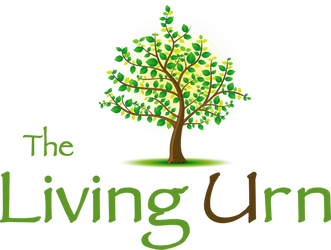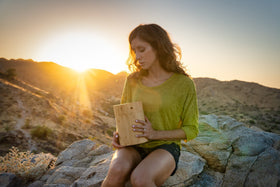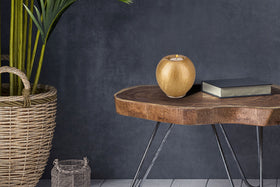
Memorial Parks: Are They the Cemeteries of the Future?
Losing a loved one is an incredibly difficult experience, and finding a meaningful way to honor their memory can be an essential part of the grieving process. Traditional cemeteries have long been the go-to option for many, but a new, more natural alternative is gaining popularity: memorial parks. These serene spaces offer a unique way to remember those who have passed, allowing families to plant trees and create living tributes that grow and thrive over time.

What is a Memorial Park?
A memorial park is a designated area where individuals can plant trees to honor a departed loved one. Unlike traditional cemeteries, often characterized by rows of tombstones and monuments, memorial parks focus on creating natural, green spaces. These parks are designed to offer a tranquil environment where families and friends can visit and find solace amidst nature. The trees planted in memory of loved ones serve as living legacies, representing growth, renewal, and the continuity of life.
Why have Memorial Parks Become Popular?
For the first time ever, more than half of Americans are choosing cremation over burial, and the National Funeral Director’s Association (NFDA) projects that this number will surge to 70% of Americans choosing cremation by 2030. As awareness of environmental issues grows, cremation has inspired the rise of memorial parks. Many people are seeking ways to reduce their ecological footprint, even in their last act on earth. Memorial parks contribute to this goal by promoting reforestation and creating habitats for wildlife. Each tree planted is unique and can be selected based on personal significance or the preferences of the departed. Also, memorial parks align with changing attitudes toward death and mourning. There is a growing desire for more positive and life-affirming ways to remember lost loved ones. Memorial parks offer a serene and beautiful setting that contrasts with the often somber atmosphere of traditional cemeteries.
Why Memorial Parks for Honoring Loved Ones?
There are several beautiful benefits to choosing a memorial park for a loved one.
Environmental Benefits
Memorial parks are a sustainable option that helps mitigate climate change. Trees absorb carbon dioxide, improve air quality, and provide habitats for various species. By planting a tree in memory of a loved one, you contribute to the planet's health, creating a lasting, positive impact.
Personalized Memorials
Whether the strong and dependable white oak or the soothing beauty of crape myrtle, families can choose specific trees or plants that hold special meaning, creating a unique and living tribute. This personalization can provide comfort and a sense of connection to the departed. The Living Urn offers over fifty types of trees and shrubs from our award-winning nursery. Simply enter your zip code to find the most suitable trees for your region.
Peaceful Reflection
Memorial parks offer a tranquil setting for reflection and remembrance. The natural surroundings provide a calming environment that can help alleviate grief and promote healing. Visiting a memorial park can be a soothing experience, providing a sense of peace and continuity.
Long-lasting Tribute
Trees are enduring symbols of life and growth. Unlike traditional monuments that may weather and decay, trees grow stronger and more beautiful with time. Some species can live for over a thousand years, such as the ginkgo biloba! This enduring nature makes them a fitting tribute to the memory of a loved one.
Memorial Parks vs. Cemeteries
While both memorial parks and traditional cemeteries serve as places to honor and remember our lost loved ones, there are several key differences between the two.
Aesthetic Appeal
Traditional cemeteries often have a uniform appearance with rows of gravestones. On the other hand, memorial parks are designed to be natural and visually appealing, focusing on greenery and landscapes. This can make memorial parks more inviting and comforting spaces.
Environmental Impact
Cemeteries can have a significant environmental footprint due to the materials used for monuments, such as wood and metal for caskets, concrete for vaults, and toxic embalming fluids. Each year in the U.S. alone, cemeteries consume over 30 million board feet of hardwoods, 1.5 million tons of concrete, and over 5 million gallons of embalming fluid, which occasionally leaks into the local groundwater. Memorial parks promote sustainability by planting trees and creating green spaces, making them a more eco-friendly option.
Cost
The cost of traditional burial plots and monuments can be substantial. Memorial parks often provide a more cost-effective alternative since tree planting is much less involved. Explore Memory Forests near you to learn more about the specific costs.
Dependability
Memorial parks are a great solution for people who don’t have a yard to plant their loved one’s bio urn. Also, it alleviates concerns for those who move frequently and don’t prefer to move their special memorial. The expert staff at a Memorial Forest water and care for your living memorial to ensure it will thrive for years to come.
Emotional Environment
The atmosphere of a memorial park is often more uplifting and life-affirming than a cemetery's typically somber tone. The presence of thriving plant life and natural beauty can offer comfort and solace to those grieving.
Find the Perfect Memorial Tree for Your Loved One
As America’s first and leading bio urn and planting system, The Living Urn enables you to grow a beautiful, enduring memory tree with the cremated remains of your loved one. Our innovative bio urn is the only one in the world designed to use young, robust trees instead of seeds or saplings, creating a greater opportunity for success. Depending on the region, certain species of trees may be more appropriate for planting. Contact a Memory Forest near you to discover the most suitable trees and sites on their property for planting your living memorial. The Living Urn planting system offers a voucher for a tree from our award-winning nursery, making purchasing a tree and bio urn simple and convenient. Visit our store today to find the perfect memorial tree for your loved one!


